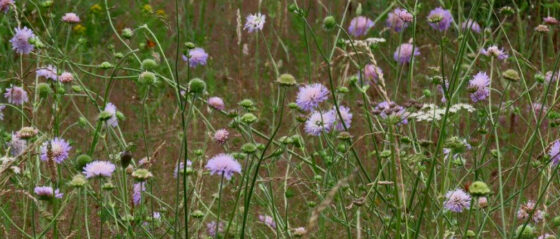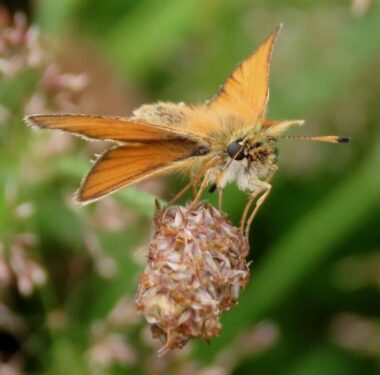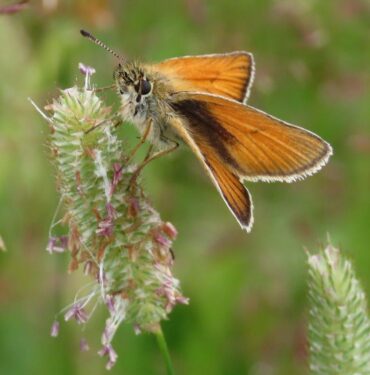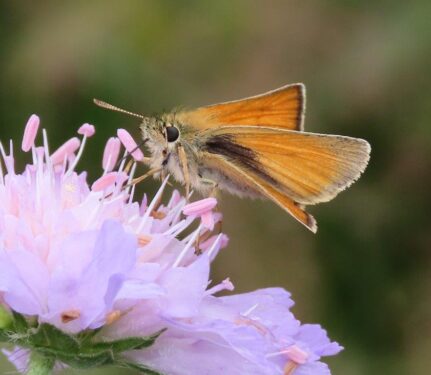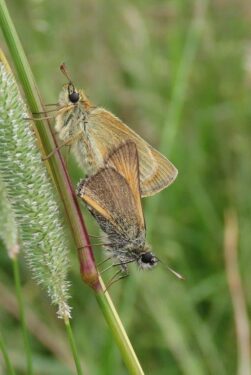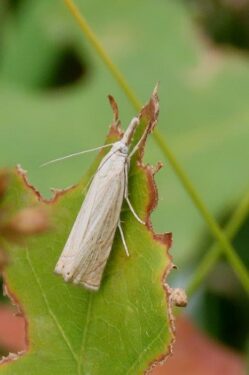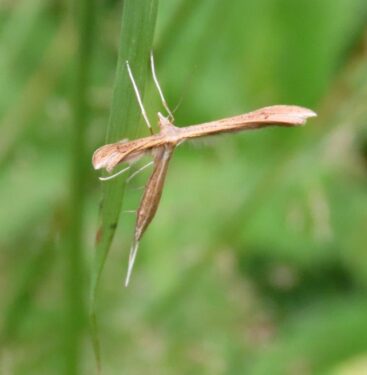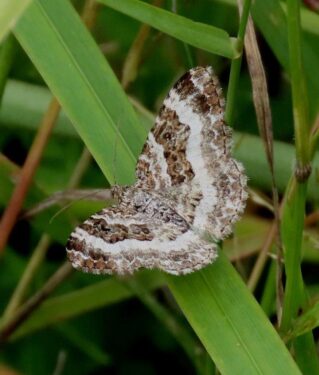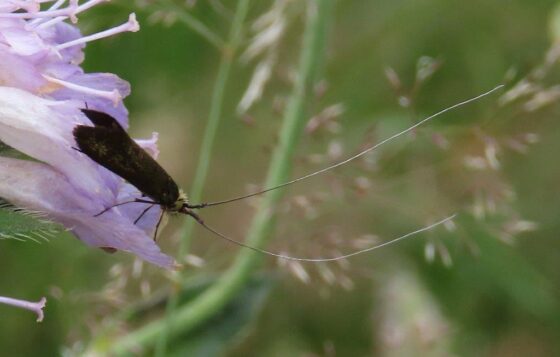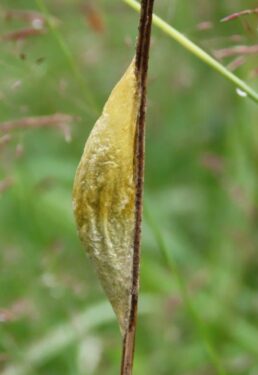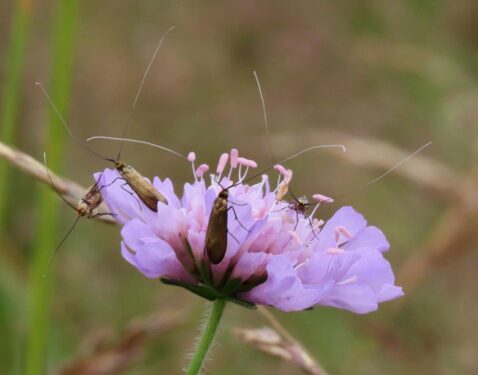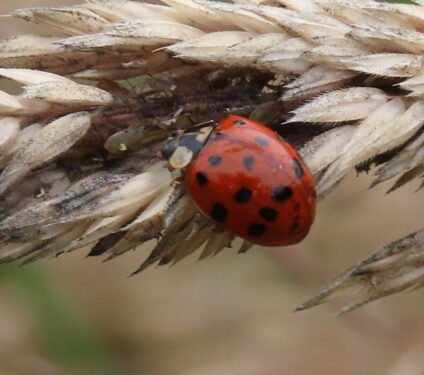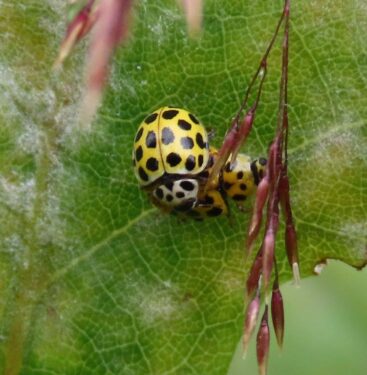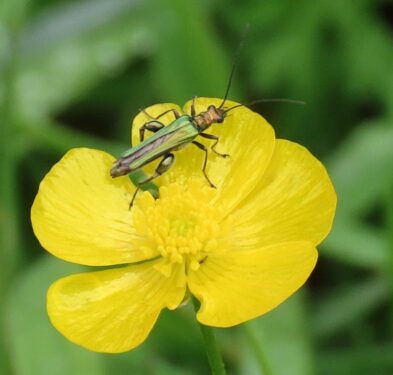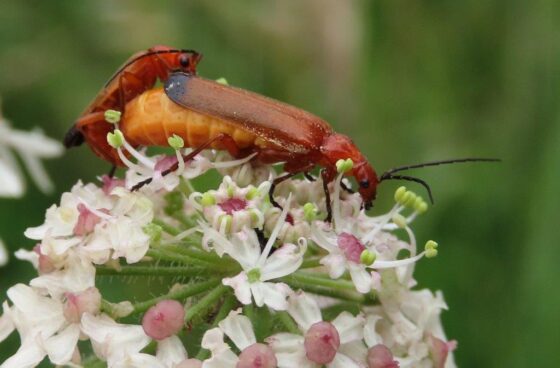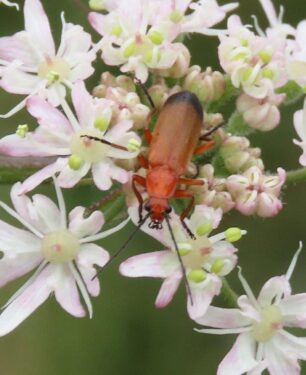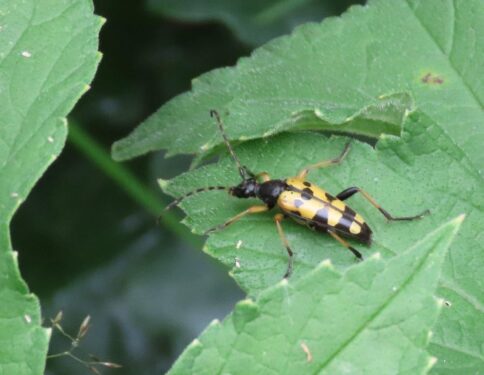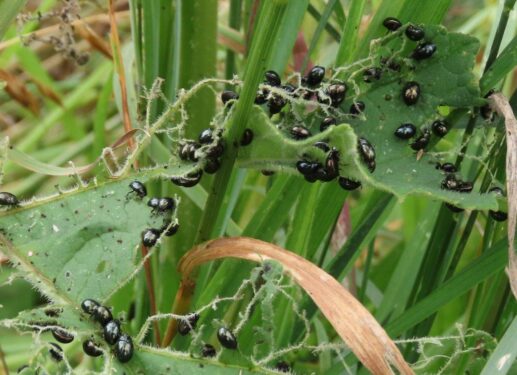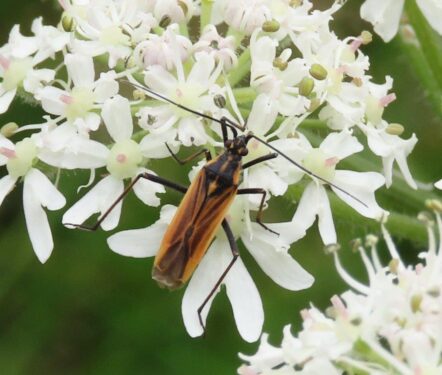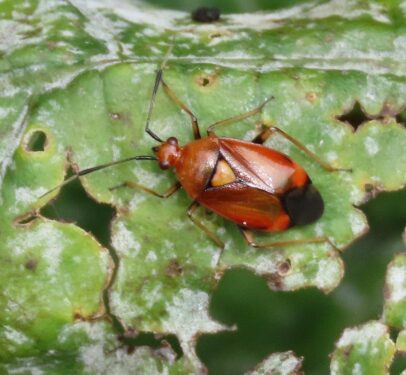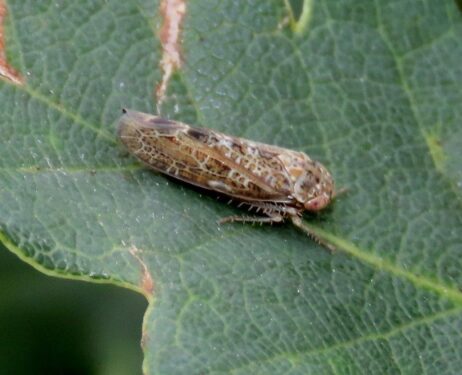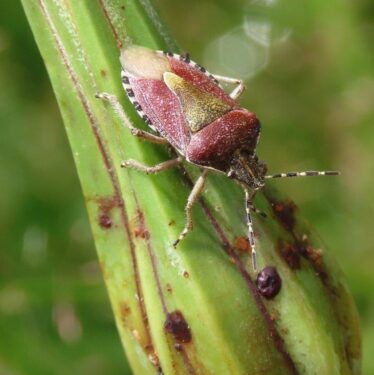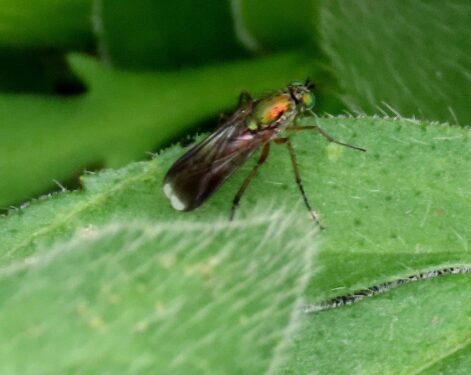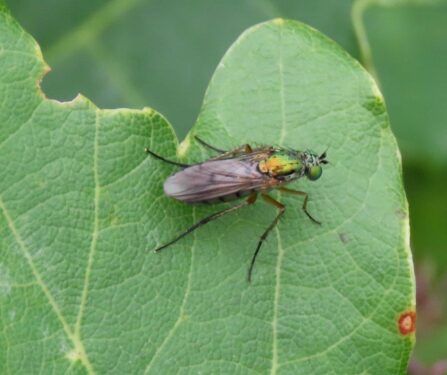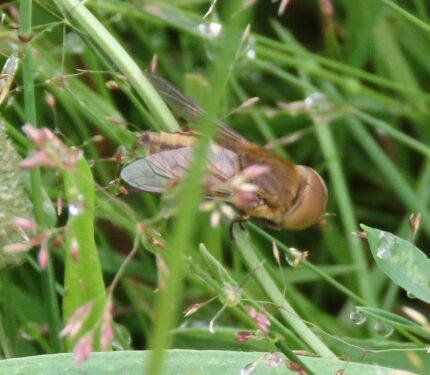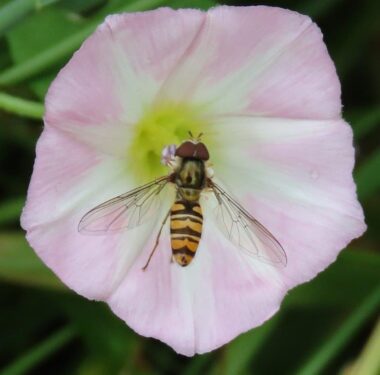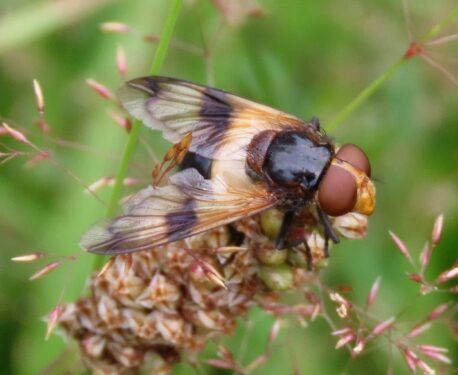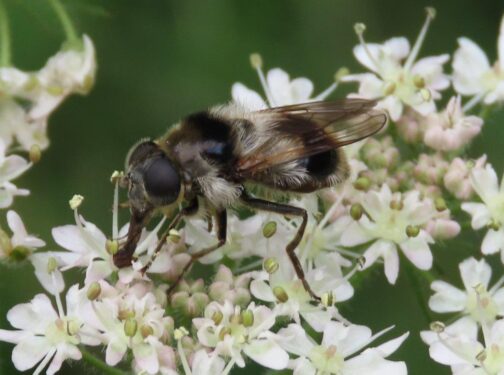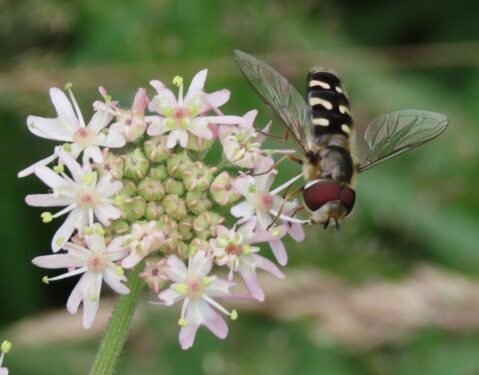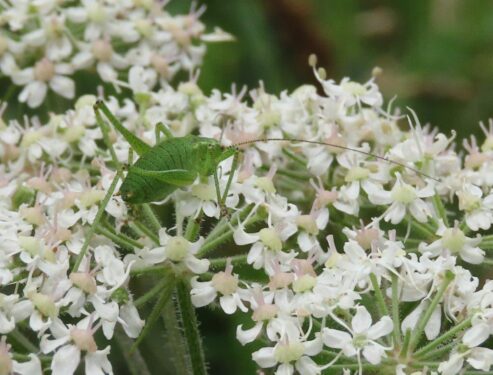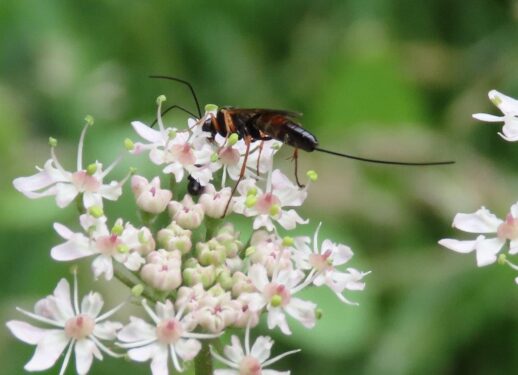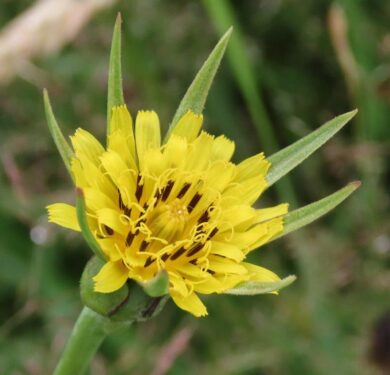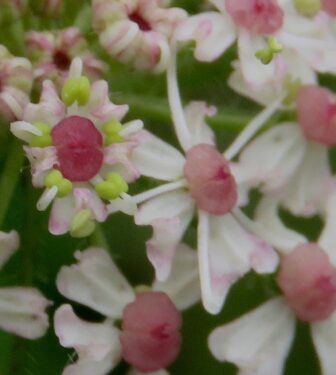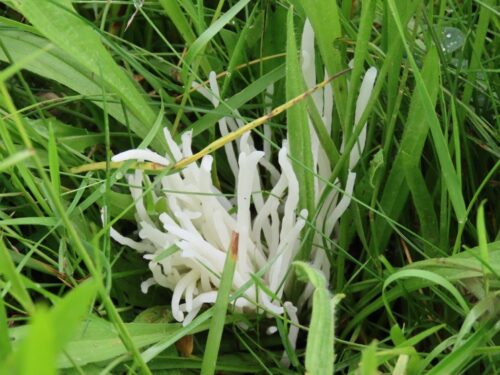Having cancelled our Saturday outing, Monday dawned very wet and grey, and we wondered if we should have pulled the plug on that too, but in the end we were very glad that we didn’t – the humidity and warmth certainly brought out the insects in Lower Lodge.
This site is one of our favourites – managed very much for wildlife – areas being left for various lengths of time to grow, and then cut to avoid any turning back into woodland. We will let the photos speak for themselves – though a couple of particularly interesting creatures (Roesel’s Bush-cricket and Emperor Dragonfly) spotted by members of the group didn’t hang around long enough to be snapped, so you will have to take our word for it!!
Skippers in their hundreds – mainly Essex (dark smudge at end of their antennae), but some Small (orange tips). Other butterflies included Meadow Browns, Ringlets, Gatekeepers, Large Whites, and just as we were leaving a pristine Red Admiral and Comma.
Moths including several types of grass moth and plume moth, a Common Carpet, Silver Y and Scabious Longhorns. Unfortunately the Burnet moths were not yet out but we did see a couple of egg cases, so we are confident that there will be some before long.
Beetles including several types of Ladybird – 7 spot, 22 spot, 24 spot and a number of types of Harlequins, Thick-thighed Beetles, Hogweed Bonkers, a Yellow and Black Longhorn beetle plus a profusion of leaf beetles munching their way through a Hogweed leaf.
Plant bugs including the reddish grass bugs Leptopterna ferrugata and Deraeocoris ruber, the beautiful planthopper Allygus mixtus and the only shieldbug of the day, a Hairy Shieldbug.
Flies including ‘Dolly’ flies which wave their wings to signal to each other, a Saltmarsh Horsefly, which we rarely see and Nationally Scarce, plus lots of Marmalade Hoverflies and a few other hoverflies including the Large Pied, a smaller bee mimic Cheilosia illustrata, and Scaeva pyrastri.
And from other orders of insects, there were Speckled Bush-crickets and a particularly fine ichneumon (parasitic) wasp.
Plants were looking good – as high as an elephant’s eye almost, thanks to all the rain we have had. Particularly good-lookers include the Field Scabious, Bird’s-foot-trefoil, Hedge Bedstraw, Lady’s Bedstraw and Goat’s-beard. Also, never forget to look deep into the familiar: at close quarters, even Hogweed is a thing of beauty.
And always good to see, fungal Fairy Fingers erupting from the turf.
Thanks to you all who took a risk with the weather – hope that you enjoyed the experience as much as we did. Hope to see you in August.
